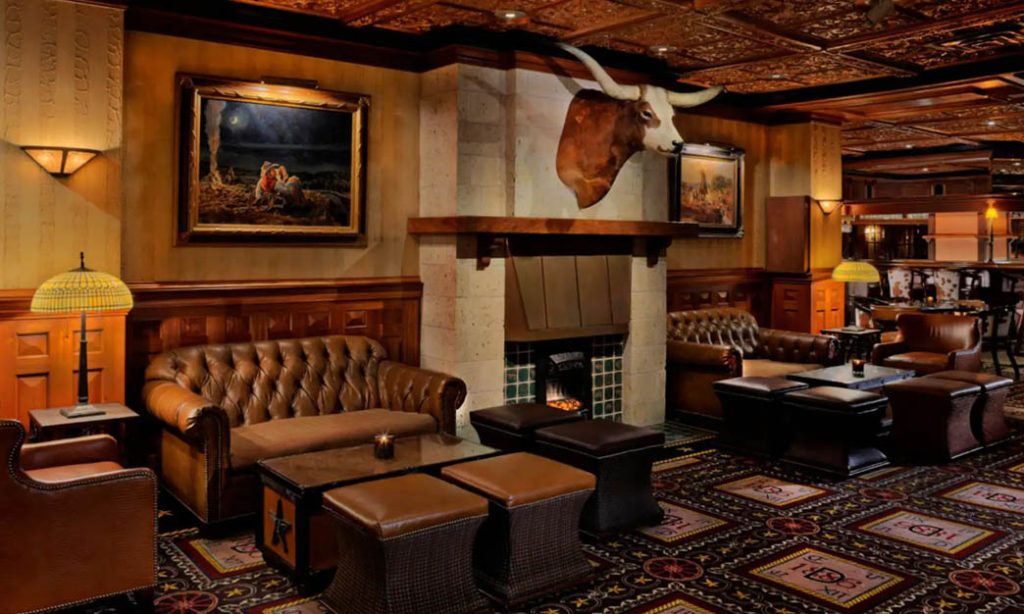Revered for its dynamic amalgamation of music, art, and cultural diversity, Austin conceals within its vibrant fabric a trove of historical landmarks that narrate tales of bygone eras.
The Texas State Capitol
The Texas State Capitol, an imposing edifice gracing downtown Austin, serves as the epicenter of the state’s governance. Standing as the largest state capitol in the United States, this historic structure not only houses political machinations but also unveils a captivating blend of history and architectural splendor.
Upon crossing the Capitol’s threshold, one is greeted by the resplendent rotunda bedecked with intricate artwork and a mesmerizing dome. The guided tours offer an intricate tapestry of legislative processes, architectural marvels, and pivotal historical events shaping Texas. The Senate and House chambers serve as poignant reflections of the state’s political metamorphosis, while the surrounding verdant grounds provide an idyllic setting for contemplative strolls.
The Capitol extends informative guided tours, educational programs, and interactive exhibits. Visitors can peruse the gift shop brimming with Texan memorabilia and savor a reprieve at the on-site café.
Pros:
- Rich historical and political insights
- Spectacular architecture and design
- Educational programs catering to diverse age groups
Cons:
- Crowded during peak tourist seasons
Geographical Location:
30.2744° N, 97.7403° W
Travel Route:
Easily accessible via public transportation, with nearby parking facilities.
Discounts and Booking:
Admission is free, but guided tours may necessitate advance booking through the official website or on-site.
The Texas State Capitol etched an indelible impression, seamlessly weaving together history and architectural grandeur. The guided tours provided nuanced perspectives on Texas’s political evolution, while the Capitol’s sheer magnificence was awe-inspiring.
The Driskill Hotel
Nestled in the beating heart of downtown Austin, The Driskill Hotel stands as an enduring testament to opulence and history. Dating back to 1886, this iconic establishment has borne witness to a century of cultural shifts, encapsulating the very essence of Austin’s evolution.
Stepping into The Driskill is akin to traversing a temporal portal. The lobby exudes an old-world charm, adorned with Victorian-era furnishings and tasteful décor. Historical tours offered by the hotel unravel its storied past, shedding light on illustrious guests and pivotal moments in Austin’s history.
The Driskill Hotel guarantees a luxurious sojourn, accentuated by exceptional dining experiences and enlightening historical tours. The on-site spa and fitness center contribute to the overall indulgence.
Pros:

- Unparalleled historical ambiance
- Impeccable service and amenities
- Central location for seamless exploration of downtown Austin
Cons:
- Elevated pricing may be prohibitive for some budgets
Geographical Location:
30.2670° N, 97.7428° W
Travel Route:
Centrally located, easily accessible via public transport, with valet parking available.
Discounts and Booking:
Periodically check for seasonal promotions on the official website or opt for renowned platforms such as Booking.com or Expedia.
The sojourn at The Driskill unfolded as a nostalgic voyage, surrounded by opulence and historical resonance. The guided tour cast light on the hotel’s role in shaping Austin’s social and cultural panorama, rendering it indispensable for aficionados of history.
Barton Springs Pool
Amidst the urban bustle, Barton Springs Pool emerges as a natural haven. Fed by subterranean springs, this historic swimming pool has been a cherished recreational haven for both locals and visitors since the early 20th century.
Barton Springs Pool extends a refreshing respite from the Texan heat. The natural spring water maintains a cool temperature year-round, setting the stage for leisurely swims or tranquil days by the pool. The lush park enveloping the pool provides a sprawling canvas for picnics and outdoor pursuits.
The pool welcomes the public with open arms, deploying vigilant lifeguards for safety. Changing facilities, a snack bar, and a nature center disseminating information about the local ecosystem enhance the overall experience.
Pros:
- Natural spring water for a distinctive swimming experience
- Budget-friendly and family-oriented
- Picturesque park setting
Cons:
- Crowded during weekends and holidays
Geographical Location:
30.2643° N, 97.7712° W
Travel Route:
Accessible by car, bike, or public transport, with parking available at Zilker Park.
Discounts and Booking:
Nominal admission fees, with concessions for children and seniors. No pre-booking required.
Barton Springs Pool emerged as a delightful reprieve from the city’s hustle. The crystalline waters and the surrounding green haven fostered a serene ambiance, constituting an ideal retreat for basking in Austin’s natural allure.
LBJ Presidential Library
Dedicated to the life and legacy of President Lyndon B. Johnson, the LBJ Presidential Library stands as a repository of historical documents, exhibits, and multimedia displays. Situated on the University of Texas at Austin campus, this museum offers a comprehensive exploration of the transformative 1960s.
The museum charts a chronological course through President Johnson’s tenure, delving into landmark events such as the Civil Rights Act and the Vietnam War. Interactive exhibits and multimedia presentations furnish a nuanced comprehension of the challenges surmounted during this pivotal epoch in American history.
The LBJ Library extends guided tours, educational programs, and access to an extensive repository of archival resources. The impeccably maintained grounds offer a tranquil backdrop for contemplation.
Pros:
- In-depth exploration of a crucial period in U.S. history
- Well-curated exhibits and multimedia presentations
- Educational programs catering to a diverse audience
Cons:
- Limited parking on peak visitation days
Geographical Location:
30.2826° N, 97.7272° W
Travel Route:
Accessible by public transport or car, with limited on-site parking supplemented by nearby options.
Discounts and Booking:
Admission fees fluctuate, with concessions for students and seniors. Online booking through the official website is advisable during peak periods.
The sojourn at the LBJ Presidential Library unfolded as a thought-provoking exploration of a transformative period in American history. The comprehensive exhibits and impeccably preserved artifacts facilitated a profound understanding of the challenges confronted by President Johnson and the nation during that era.
Mount Bonnell
For a panoramic vista showcasing Austin and the meandering Colorado River, Mount Bonnell emerges as an essential natural landmark. Ascending 775 feet above sea level, this vantage point offers a serene retreat and a glimpse into the natural beauty enveloping the city.
A brief hike to Mount Bonnell’s summit unveils sweeping panoramas of the city skyline, the Colorado River, and the verdant landscapes that define Austin. The tranquil surroundings make it an ideal locale for both contemplation and photography.
The site is open to the public without an admission fee. While lacking guided tours, informative plaques along the trail provide historical context for a self-guided exploration.

Pros:
- Spectacular views of Austin and the Colorado River
- Free and accessible to all
- Tranquil and scenic hiking experience
Cons:
- Limited amenities on-site
Geographical Location:
30.3209° N, 97.7738° W
Travel Route:
Accessible by car, with limited parking available. Public transportation does not directly reach the site.
Discounts and Booking:
No booking is necessary; Mount Bonnell is a public park with free access.
Mount Bonnell delivered a serene escape from urban life, allowing me to revel in Austin’s natural allure. The panoramic views proved mesmerizing, and the simplicity of the site rendered it an ideal haven for those seeking a peaceful communion with nature.
French Legation Museum
Nestled in East Austin, the French Legation Museum holds the distinction of being the oldest wooden structure in the city. Erected in 1841, this historic site served as the diplomatic outpost for the French government during the Republic of Texas era.
Embarking on a guided tour through the museum immerses visitors in Austin’s early history. The well-preserved rooms showcase period-specific furnishings, offering insights into the diplomatic activities that unfolded within the walls of the French Legation.
The museum extends guided tours, educational programs, and occasional events. The on-site gift shop features unique items relating to the site’s rich history.
Pros:
- Meticulously preserved historic structure
- Insight into early diplomatic history
- Engaging guided tours
Cons:
- Limited parking availability
Geographical Location:
30.2633° N, 97.7309° W
Travel Route:
Accessible by car, bike, or a longer walk from downtown Austin. On-site parking is limited.
Discounts and Booking:
Admission fees fluctuate, with concessions for students and seniors. Tour availability and booking options can be checked on the official website.
The French Legation Museum unfolded as a captivating portal to Austin’s early diplomatic intrigues. The authenticity of the preserved rooms and the engaging guided tour rendered it a unique and enriching experience for history enthusiasts.
Austin’s historical landmarks intricately weave a narrative spanning centuries, from the formative days of the Republic of Texas to the transformative 1960s and beyond. Each site explored, from the stately Texas State Capitol to the natural haven of Mount Bonnell, offers a distinctive lens through which to view the city’s evolution.
While the Texas State Capitol immerses visitors in the intricacies of state politics, The Driskill Hotel provides a luxurious retreat resonating with opulence. Barton Springs Pool and Mount Bonnell showcase Austin’s commitment to preserving its natural beauty, offering havens of relaxation amidst urban vibrancy.
The LBJ Presidential Library and the French Legation Museum focus on specific historical periods, providing nuanced insights into political and diplomatic landscapes. Whether navigating the turbulent 1960s or exploring Austin’s earliest diplomatic endeavors, these sites contribute to a comprehensive understanding of the city’s cultural and historical mosaic.
The city’s dedication to preserving its heritage while embracing modernity creates a unique and enriching experience for those eager to delve into the roots of this dynamic Texan metropolis.



